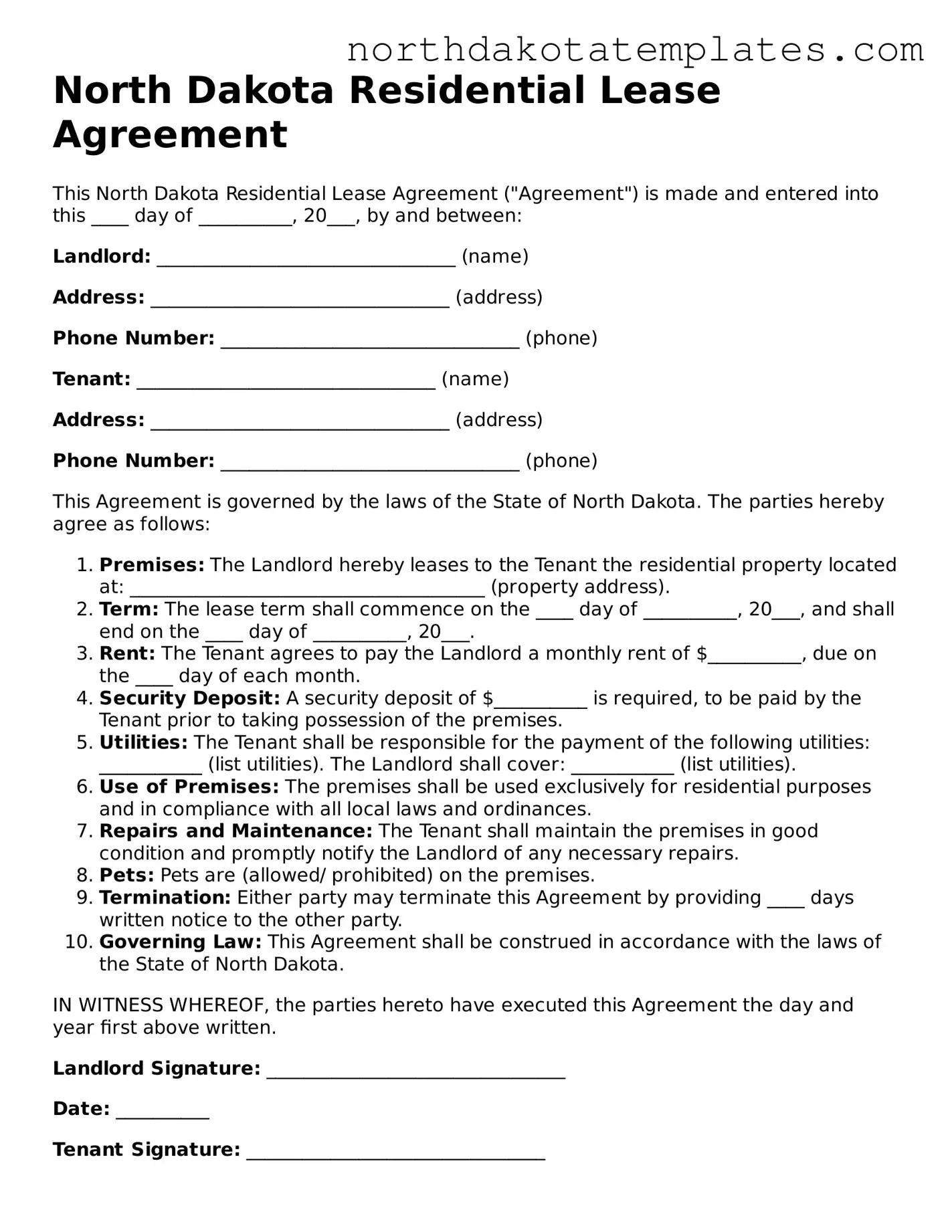What is a North Dakota Residential Lease Agreement?
A North Dakota Residential Lease Agreement is a legally binding contract between a landlord and a tenant. This document outlines the terms and conditions under which a tenant may rent a residential property. It typically includes details such as the duration of the lease, rental payment amounts, security deposits, and the responsibilities of both parties.
What are the essential elements of a Residential Lease Agreement in North Dakota?
Essential elements include the names of the landlord and tenant, the address of the rental property, the lease term (whether it is month-to-month or a fixed term), the rental amount, payment due dates, and any rules regarding maintenance and repairs. Additionally, the agreement should specify the security deposit amount and conditions for its return.
How long can a lease last in North Dakota?
In North Dakota, a lease can last for various durations. It can be a short-term lease, such as a month-to-month agreement, or a long-term lease, which can last for a year or more. The specific duration should be clearly stated in the lease agreement to avoid any misunderstandings.
Can a landlord increase the rent during a lease term?
Generally, landlords cannot increase the rent during a lease term unless the lease specifically allows for it. For month-to-month leases, landlords can raise the rent, but they must provide proper notice to the tenant, typically 30 days in advance. For fixed-term leases, any rent increase would only take effect once the lease is up for renewal.
What happens if a tenant wants to break the lease early?
If a tenant wishes to break the lease early, they may face penalties as outlined in the lease agreement. Common consequences include losing the security deposit or having to pay rent until the property is re-rented. It is advisable for tenants to communicate with their landlord and review the lease terms to understand their options.
Are there any specific disclosures required in North Dakota lease agreements?
Yes, landlords in North Dakota are required to provide certain disclosures in the lease agreement. These may include information about lead-based paint if the property was built before 1978, as well as details about any known health or safety hazards. Transparency is crucial to ensure that tenants are fully informed about the property they are renting.
What rights do tenants have under a Residential Lease Agreement?
Tenants have several rights under a Residential Lease Agreement. These include the right to a habitable living environment, the right to privacy, and the right to receive proper notice before any entry by the landlord. Additionally, tenants can expect that their security deposit will be returned in accordance with the terms outlined in the lease.
What should a tenant do if the landlord does not fulfill their obligations?
If a landlord fails to fulfill their obligations, such as making necessary repairs, tenants should first document the issue and communicate with the landlord. If the problem persists, tenants may have the option to withhold rent or seek legal remedies. It is important to follow the proper procedures outlined in the lease and state law to avoid potential repercussions.
Can a lease be modified after it has been signed?
Yes, a lease can be modified after it has been signed, but both parties must agree to the changes. Modifications should be documented in writing and signed by both the landlord and tenant to ensure clarity and enforceability. Verbal agreements may lead to misunderstandings, so written documentation is always recommended.
